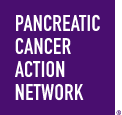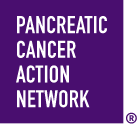
David Linehan, MD, worked with a team of collaborators to determine how to classify pancreatic tumors by subtype.
New research suggests that pancreatic tumors can be classified into two broad categories – and this information can help guide treatment decisions.
In a paper published recently in Clinical Cancer Research, lead authors Jen Jen Yeh, MD, and Naim Rashid, PhD, of University of North Carolina (UNC) at Chapel Hill, described a strategy to quickly and reliably determine a pancreatic tumor’s subtype – and showed how this information may be able to help predict the best chemotherapy regimen for that patient.
“Our study evaluated the best way to classify tumors according to available treatment response data from prior clinical trials,” Yeh said in the UNC press release about this work.
“Our hope is that we can use this information to tailor treatments, and potentially avoid giving therapies that may not work well for certain patients.”
Yeh is a co-investigator of the 2016 Pancreatic Cancer Action Network (PanCAN) Research Acceleration Network-2 (RAN-2) Grant, funded by the Henry and Marilyn Taub Foundation in memory of Shirley Sadoff. Yeh partnered with David Linehan, MD, principal investigator of the RAN-2 grant and co-author of the study.
“Without PanCAN, this project would simply not have been possible,” said Linehan, the Seymour I. Schwartz Professor and Chair of Surgery at the University of Rochester.
Linehan continued, “The support provided from this award allowed us to study the biology of tumor samples from patients who participated in clinical trials and test our ‘PurIST’ classification system.”

Linehan (left, at microphone) engages in a research discussion at PanCAN’s 2019 Annual Scientific Summit.
PurIST, which stands for Purity Independent Subtyping of Tumors, is a test to identify the tumors’ subtype, or classification, with the hope to use that information to guide treatment options for the patient.
Before being used to classify tumors in patients who haven’t received any treatment yet, the research team had to make sure it was accurate using samples from patients who had already been treated.
Linehan’s RAN-2 grant allowed him and the team to gather and analyze tumor tissue samples from patients who participated in clinical trials and find out if the test results aligned with the patients’ responses to certain treatments.
“This speaks to the value of the funding provided by PanCAN, which looks past conventional approaches and supports innovation in the treatment of pancreatic cancer,” Linehan said.
The data so far, although preliminary, suggest the PurIST test can classify tumors under one of two categories, which may be able to predict whether patients respond to a certain combination chemotherapy regimen called FOLFIRINOX.
Linehan cautioned, “While these results are encouraging, we must integrate and test the PurIST classifier in additional clinical studies with different interventions moving forward.”
He also noted that he’s pleased the paper was published during November, Pancreatic Cancer Awareness Month.
Linehan said, “November provides a platform for all of us who know the devastating realities of pancreatic cancer to speak even louder to share the need for more research, more engagement and more funding to fight alongside the thousands of Americans who face this uphill struggle every year.”





